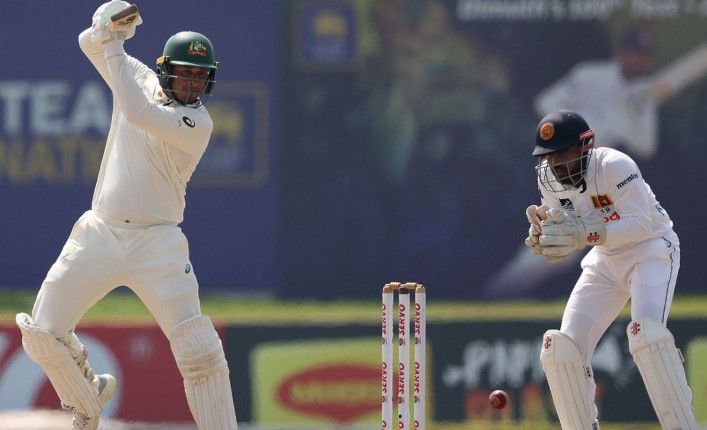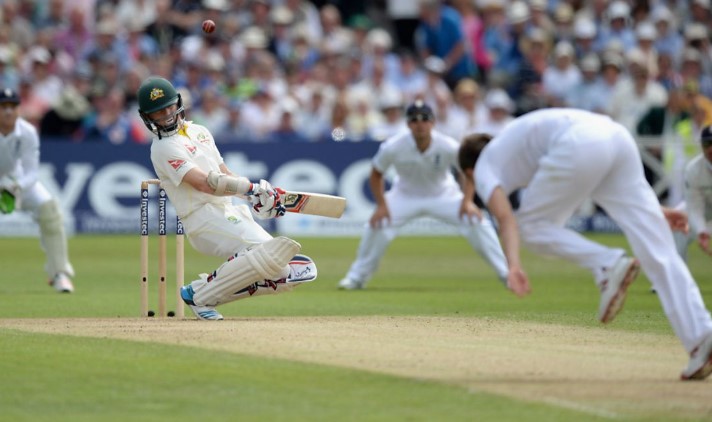Test cricket, often regarded as the purest form of the game, offers a unique brand of cricketing experience. The matches are played over five days, and the focus is more on strategy, patience, and endurance rather than quick-fire scores. As a result, batsmen in Test cricket tend to bat much more slowly compared to their counterparts in limited-overs formats like One Day Internationals (ODIs) and Twenty20 (T20) matches. This slow batting style has raised questions for many cricket fans and experts alike.
Why do batsmen, particularly in Test cricket, seem to bat so slowly? Is it a necessity, or is it simply a matter of tradition and style? This article delves into the reasons behind slow batting in Test cricket, exploring the challenges faced by batsmen in the longest format of the game, the strategies they adopt, and the importance of playing with patience and skill. It also compares Test batting to the fast-paced nature of limited-overs formats and why these differences exist.
The Nature Of Test Cricket

Test cricket, which is played over five days with two innings per side, has a fundamentally different structure compared to shorter formats of the game. In Test cricket, the batsmen are not merely concerned with accumulating runs quickly; instead, they focus on surviving longer periods of play, rotating the strike effectively, and building partnerships.
Key factors that make Test cricket slower than limited-overs formats include:
Duration and Structure: Test matches are spread over five days, giving batsmen ample time to accumulate runs. There is no rush to score quickly, as there would be in a one-day match or a T20. The batsmen’s primary aim is to ensure their wicket remains intact for as long as possible, often at the cost of a slow scoring rate.
Pitch Conditions: Test cricket often involves playing on pitches that can vary greatly in nature. Early on, the pitch may be hard and offer little assistance to the bowlers. As the match progresses, however, the pitch can deteriorate, offering more assistance to spin bowlers or causing the ball to seam more. Batsmen have to adjust to these changing conditions, and slow batting is often the result of their focus on survival and adapting to challenging pitch conditions.
Pressure to Stay at the Crease: Unlike in shorter formats, batsmen in Test cricket are under constant pressure to stay at the crease for long periods. The longer they stay, the more opportunities they have to score. A batsman who gets out early can completely change the dynamic of the match, so the focus is on staying at the crease for as long as possible, often at a slower pace.
Factors Contributing To Slow Batting In Test Cricket
The primary reason why batsmen bat slowly in Test cricket lies in the specific demands and challenges of the format. Let’s explore these factors in more detail:
1. Focus On Technique And Patience

Test cricket is the ultimate test of a batsman’s technique and mental strength. Since the match lasts for several days, batsmen are required to be patient, building their innings over time. The need to pace an innings and avoid rash shots leads to a slower scoring rate. Batsmen must meticulously watch each ball, play it with proper technique, and only go for runs when it is safe to do so.
Patience Over Aggression: Unlike limited-overs formats, where scoring quickly is essential, Test cricket places more value on accumulating runs over time, which often results in a slower rate of scoring.
2. Tactical Approach
In Test cricket, batsmen adopt a more tactical approach. They assess the conditions and adapt their batting style accordingly. This is especially crucial when facing tough bowlers or difficult conditions. Batsmen tend to play more defensive shots in Test cricket, keeping the ball under control and often leaving balls outside the off-stump. They will only go for aggressive shots when they are absolutely sure of getting the right ball to score off.
3. Changing Pitch Conditions
As the match progresses, the pitch conditions in Test cricket can change drastically. In the first innings, the pitch may provide consistent bounce, but as the match progresses, the pitch may start to wear out, offering more turn for spinners or uneven bounce for fast bowlers. Batsmen have to be patient and often bat more cautiously as the ball behaves unpredictably, leading to slower scoring.
- For example: In India, pitches often start off flat and turn into spin-friendly tracks as the match progresses, making batsmen cautious in their approach as the ball starts turning more.
4. Survival And Building Partnerships
Test batsmen are more focused on building partnerships and accumulating runs over time. The idea is to occupy the crease and rotate the strike effectively, making the bowlers work hard. Quick-scoring can often lead to batsmen throwing their wickets away, but a steady partnership helps tire out the bowlers and wear down the field placements, which can lead to easy scoring opportunities later in the innings.
- Notable Example: The famous partnership between Dravid and Laxman in the 2001 Kolkata Test against Australia, where they batted for over 100 overs, was built on patience and consistency.
5. Defensive Batting Mindset
In Test cricket, defensive batting is crucial. Batsmen are less likely to take risks by going for big shots or aggressive strokes. Instead, they focus on defending the ball, leaving deliveries that are not in their scoring zone, and waiting for the right moment to attack. This mindset significantly slows down the scoring rate compared to limited-overs formats, where batsmen are under pressure to score quickly.
Comparison With Limited-Overs Formats

In contrast to Test cricket, the limited-overs formats like ODIs and T20s place a much greater emphasis on scoring quickly. Here, the batsman is expected to accumulate runs at a much faster rate, as the game has a limited number of overs and time is of the essence.
| Aspect | Test Cricket | ODI and T20 Cricket |
|---|---|---|
| Time Frame | Played over 5 days | Played over 50 overs (ODI) or 20 overs (T20) |
| Batting Mindset | Patient, focused on building long innings | Aggressive, focused on quick runs |
| Scoring Rate | Slow, with occasional boundaries and singles | Fast, with emphasis on boundaries and sixes |
| Fielding Restrictions | No restrictions | Powerplays restrict field placement |
| Pitch Conditions | Can change drastically, especially in spin-friendly conditions | Generally consistent across the match |
Tactics In Limited-Overs Formats:
ODIs: Batsmen focus on rotating the strike and hitting boundaries in specific powerplay overs or later in the innings.
T20s: The primary objective is to attack from the outset, with boundaries and big hitting the norm to reach competitive totals.
Key Examples Of Slow Batting In Test Cricket

Brian Lara: One of the greatest batsmen in history, Brian Lara’s innings in Test cricket often showcased his slow batting style. He could accumulate runs steadily over many hours, building monumental innings such as his 400 against England.
Ricky Ponting: A player known for his aggressive style, Ponting displayed slower batting in Test cricket when the conditions demanded patience. His adaptability and ability to switch between defense and attack made him a successful Test batsman.
Alastair Cook: A prime example of the slow, steady approach to Test cricket, Cook’s career was built around occupying the crease, scoring slowly but consistently. His ability to play long innings was key to England’s success in Test matches.
The Essence Of Slow Batting In Test Cricket
Batsmen bat slowly in Test cricket primarily because of the demands of the format itself. The key factors include the need for patience, the ability to survive changing pitch conditions, a defensive mindset, and the importance of building partnerships. Unlike limited-overs cricket, where scoring quickly is essential, Test cricket values technique, mental fortitude, and the ability to adapt to challenging conditions over time.
Test cricket is a marathon, not a sprint, and slow batting is a natural outcome of this approach. Ultimately, the slower pace of batting in Test cricket is what gives the format its unique character and challenges, making it a true test of a player’s skill, patience, and resilience.

